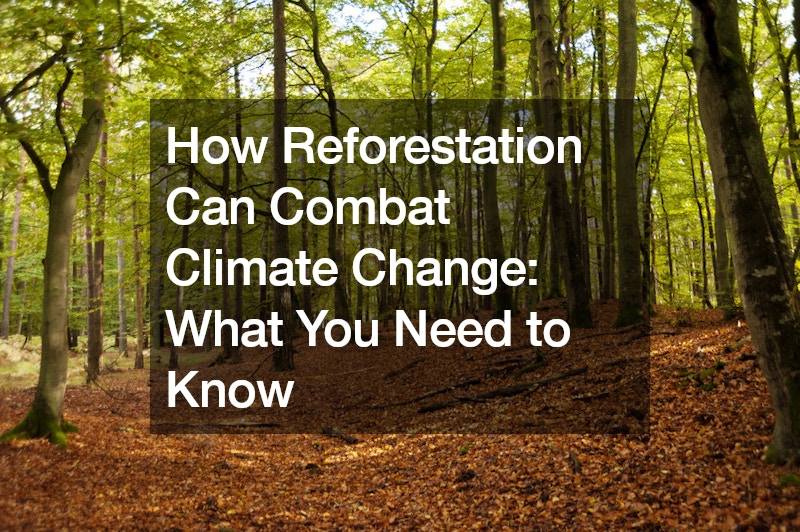
In today’s era of environmental concern, one of the most powerful solutions emerging is reforestation. Simply put, reforestation involves the process of replanting trees in areas that have been deforested or degraded. This practice holds immense promise in mitigating climate change and rejuvenating ecosystems worldwide.
Forests, often dubbed as the “lungs of the Earth,” play a critical role in combating climate change. They act as carbon sinks, absorbing carbon dioxide from the atmosphere and storing it in their biomass.
By increasing the number of trees through reforestation efforts, we can enhance the planet’s capacity to absorb carbon, thus reducing the amount of greenhouse gases in the atmosphere.
Deforestation, driven by various factors such as agriculture, industry, and wildfires, has led to significant losses of tree cover globally. However, reforestation offers a ray of hope in reversing this trend. Through carefully planned initiatives, damaged areas can be restored by planting new trees, thereby replenishing lost habitats and ecosystems.
One of the primary goals of reforestation projects is to restore habitats that have been ravaged by wildfires. These catastrophic events not only destroy vast swathes of forests but also disrupt entire ecosystems. By replanting trees in these areas, we can help restore balance to the environment and promote biodiversity.
Furthermore, reforestation plays a crucial role in reclaiming lands that have been used for mining and agriculture. These activities often result in the degradation of soil and the loss of valuable habitats. By planting trees in these areas, we can rehabilitate the soil, prevent erosion, and create new habitats for wildlife.
Another key aspect of reforestation is the promotion of sustainable forestry practices. By replanting trees in logged areas, we can ensure that forests remain productive and resilient. Additionally, implementing proper tree care techniques, such as pruning and thinning, can help optimize the growth and health of newly planted trees.
Reforestation initiatives have the potential to deliver numerous environmental, social, and economic benefits. Apart from sequestering carbon and restoring habitats, these projects can generate sources of food, jobs, and income for local communities. Moreover, forests contribute to improved air and water quality, making them essential for human well-being.
To ensure the success of reforestation efforts, proper planning and implementation are essential. Planting locations must be carefully chosen based on environmental considerations and the needs of local communities. Additionally, selecting appropriate tree species and adhering to local planting standards are crucial for the long-term success of these projects.
Once trees are planted, ongoing tree care is necessary to ensure their survival and growth. This includes activities such as watering, mulching, and protection from pests and diseases. By providing adequate care to newly planted trees, we can increase their chances of thriving and contributing to ecosystem restoration.
Challenges and Solutions
Despite its numerous benefits, reforestation faces several challenges, including funding constraints, land tenure issues, and competing land uses. Limited financial resources often hinder the scale and effectiveness of reforestation projects, particularly in developing countries. Moreover, unclear land tenure rights and conflicts over land use can impede efforts to secure suitable sites for planting trees.
To address these challenges, governments, non-profit organizations, and private companies must work together to mobilize resources and coordinate efforts. Public-private partnerships can help leverage funding and expertise from various stakeholders, ensuring the success and sustainability of reforestation initiatives.
In addition to financial support, community engagement and capacity building are essential for the long-term success of reforestation projects. Local communities must be involved in decision-making processes, from project planning to implementation and monitoring. By empowering communities to take ownership of reforestation efforts, projects are more likely to be sustainable and effective.
The Role of Technology
Advancements in technology are revolutionizing the field of reforestation, making planting and monitoring more efficient and cost-effective. Drones equipped with LiDAR (Light Detection and Ranging) sensors can accurately assess terrain and identify suitable planting sites. Automated planting machines can rapidly plant thousands of seedlings per day, significantly increasing planting efficiency.
Furthermore, remote sensing technologies such as satellite imagery and GIS (Geographic Information Systems) enable researchers to monitor forest cover, track deforestation trends, and evaluate the impact of reforestation projects over time. These tools provide valuable insights for decision-makers and help optimize resource allocation and project management.
Conclusion
In conclusion, reforestation holds immense promise in addressing the dual challenges of climate change and biodiversity loss. By restoring forests, we can sequester carbon, conserve biodiversity, and enhance ecosystem services. However, reforestation requires concerted efforts from governments, businesses, and civil society to overcome funding constraints, land tenure issues, and technological barriers.
Through collaborative action and innovative solutions, we can harness the power of reforestation to create a more sustainable and resilient future for generations to come. By investing in reforestation today, we can protect our planet’s natural heritage and secure a better tomorrow for all.
.

